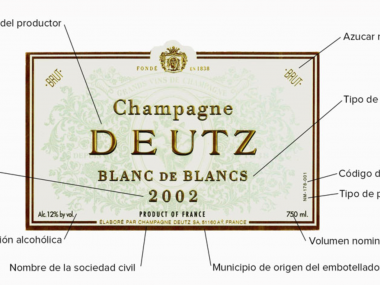Even before the invention of wooden barrels, the Greeks and Romans were aware that clay amphorae were one of the most efficient ways of making, preserving and transporting wine.
Making, maturing and preserving wine in earthenware jars is a craft that reveals the origins of viticulture.
But why have wine jars become so popular again? Let’s find out!
Origins in Georgia
The origins of wine making in jars can be traced back to the Caucasus, specifically to Georgia. Archaeologists have discovered clay jars, known locally as kvevri, which were used to create wine in this country, which is one of the oldest wine-growing epicentres in the world.
The Georgians invented the method of macerating, fermenting, ageing and storing wine in huge clay jars 8,000 years ago. Kvevri are still used today to make the traditional wines of the region.
These earthenware vessels were used in Egypt, Greece, Rome and other parts of the ancient world. They were used for storing, maturing and transporting wine. The clay used to create the jars was ideal for preserving and transporting wine around the world.
Today, many winemakers are rediscovering this historic winemaking technique, from the United States to Australia, Italy, France, Portugal and, of course, Spain.
Why have wine jars made a comeback?
Clay is a material that is halfway between steel and barrel. At least as far as oxygen is concerned.
- Steel makes it difficult for oxygen to enter the barrel. In other words, the wine develops in a reductive environment without oxygen.
- The barrel, on the other hand, is the polar opposite. Oxygen easily penetrates its pores, oxidising the wine and causing it to evolve in a completely different way than it does in steel.
- The vat allows oxygen to pass through, but not as easily as the pores of the barrel.
but there are even more differences!
- Steel is absolutely tasteless and odourless, so it has no effect on the wine.
- Of course, this is not the case with barrels. The wine is impregnated with the odours of the barrel. The adjectives for a wine linked to barrel are as numerous as fish in the sea: spicy, toasty, balsamic…. In addition to tannins and other chemical substances that influence the body and structure of the wine.
- The jar, on the other hand, is absolutely neutral. It has no aroma or flavour. In a way, it keeps the purity of the character of the grape and the terroir unchanged. It is just a matter of air. As a result, they are frank, direct and delicious wines.
Last but not least, the shape of the vats varies. That has already been said. However, they all have a round appearance. This is no joke. These circular shapes favour the movement of the wine, allowing a continuous suspension (known as Brownian movements in physics), resulting in a more homogeneous and smoother extraction than steel.
The more esoteric will also tell you that the ovoid shape naturally increases the energy flows caused by the influence of the moon, storms and the wine’s own needs. But we leave that to the more esoteric to explain.
The benefits of the wine jar
Gentle vinification is the result of all this. The wine ferments in these vessels without the need for yeast and nutrients. The skins are gently macerated, and the extraction of chemicals from the skins into the must is slow, gentle and soft. This is facilitated by the low porosity of the vat, which allows for slow micro-oxygenation
Despite the fact that these are full-bodied varieties, such as Tempranillo, this results in silky tannins, light colours and a wine that is not overpowering, but rather calm.
Due to the lack of fragrances transmitted by the vat and the moderate oxygenation, the ageing process can be longer than in barrels. The concept is that once the wine is removed from the jar, it is ready to drink and does not require much more time in the bottle
so in effect, it will only be a few weeks after bottling when you buy it!
And you, have you ever seen a jar of wine live? It’s never too late!






